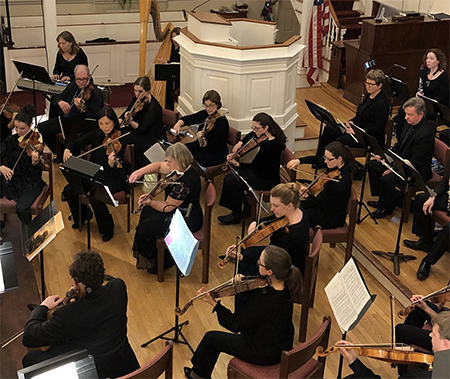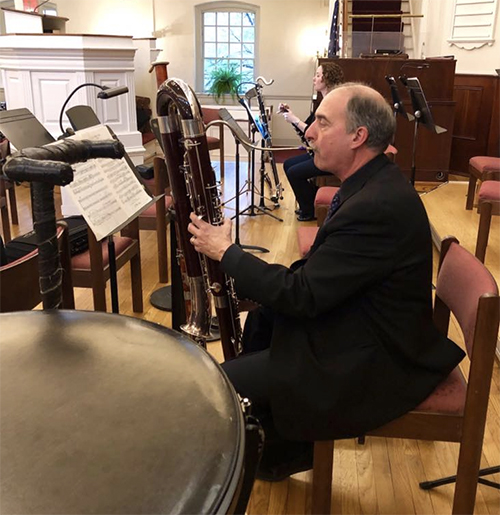by David Kulma

Meyer is a generously clear conductor with an emphasis on musical shapes of all lengths. In between works, he is an engaging speaker who gives the audience a compassionate view of the music on display. If this concert’s programming is a sign of the future, BlueWater with Meyer will fill a deserving niche. Titled “Classic Tales Retold In Music,” the intermission-less concert paired two wonderful American composers — one living and one unjustly neglected — with two mainstays of the small orchestra repertoire.
John Corigliano’s early Elegy from 1965 is a bold statement. Dedicated to Samuel Barber, this short work was originally for an off-Broadway play about an aging Helen of Troy. Although Corigliano is clearly in the American tonal tradition, this roiling, mournful work consoles no one. Its tuneful, yet strident textures clearly act out its emotional torment. Even sitting in the balcony, one could feel the timpani hits.
Works by David Diamond aren’t programmed as often as they should be. His Music for Romeo and Juliet explores Shakespeare’s best-known story in five movements ranging in style from Stravinsky and Copland influences to a clearly individual, muscular American tonality. The last three movements are the gems. “Romeo and Friar Laurence” gave the individual string sections a chance to show off their excellent uniformity of phrasing, while the scherzo “Juliet and Her Nurse” was delightfully springy. The pathos-filled “Death of Romeo and Juliet” made a convincing case for Diamond’s music.
Outside of the storytelling frame, Meyer and BlueWater’s twenty string players gave a quality rendition of Edward Elgar’s Serenade for Strings. Elgar’s textures tend toward molassessy thickness, but sections like the soft second theme in the Larghetto had an ethereal beauty that showed the kind of revelatory playing that is possible under Meyer’s direction.
Rounding out the program was Maurice Ravel’s complete ballet version of Ma mère l’Oye (“Mother Goose”). Taking a children’s piano duo piece, making it into an orchestral suite, then turning that into a ballet, Ravel crafted one of his most magical works. Meyer beautifully shaped the entire span of the work, arriving at the miraculous, spine-tingling ending that showed off the Orchestra at its best.
With more important solos than can be counted, nearly the entire wind section of flutes, oboes, clarinets, bassoons, and horns was featured in important and delightfully played lines. Of special note was the immaculate flute playing of Sean Gabriel and Linda White, and clarinetist Amitai Vardi’s lovingly simple portrayal of Beauty, paired with contrabassoonist Mark DeMio’s buzzingly fun Beast.
Photo of Mark DeMio by Elizabeth DeMio.
Published on ClevelandClassical.com May 7, 2019.
Click here for a printable copy of this article




